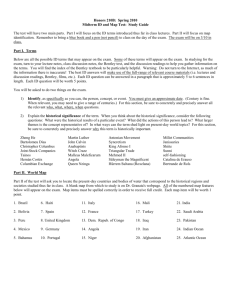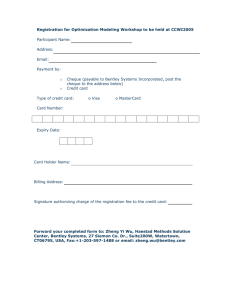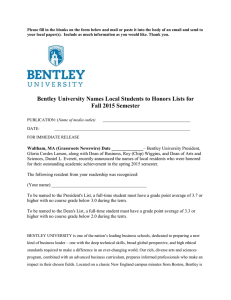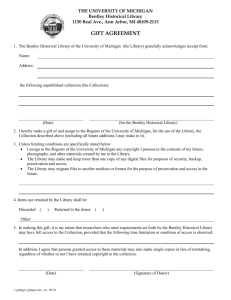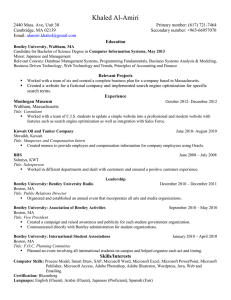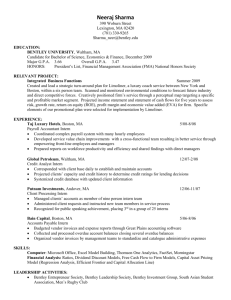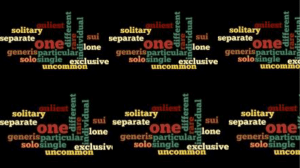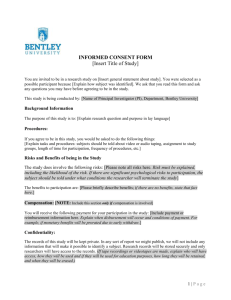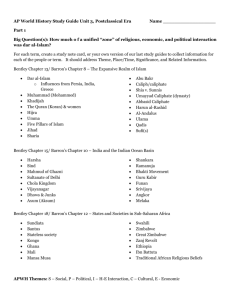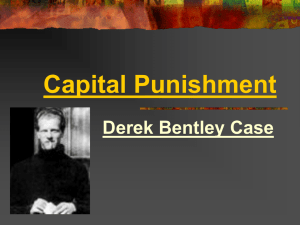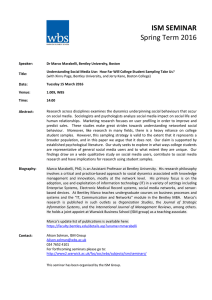Final ID and Map Test: Study Guide
advertisement
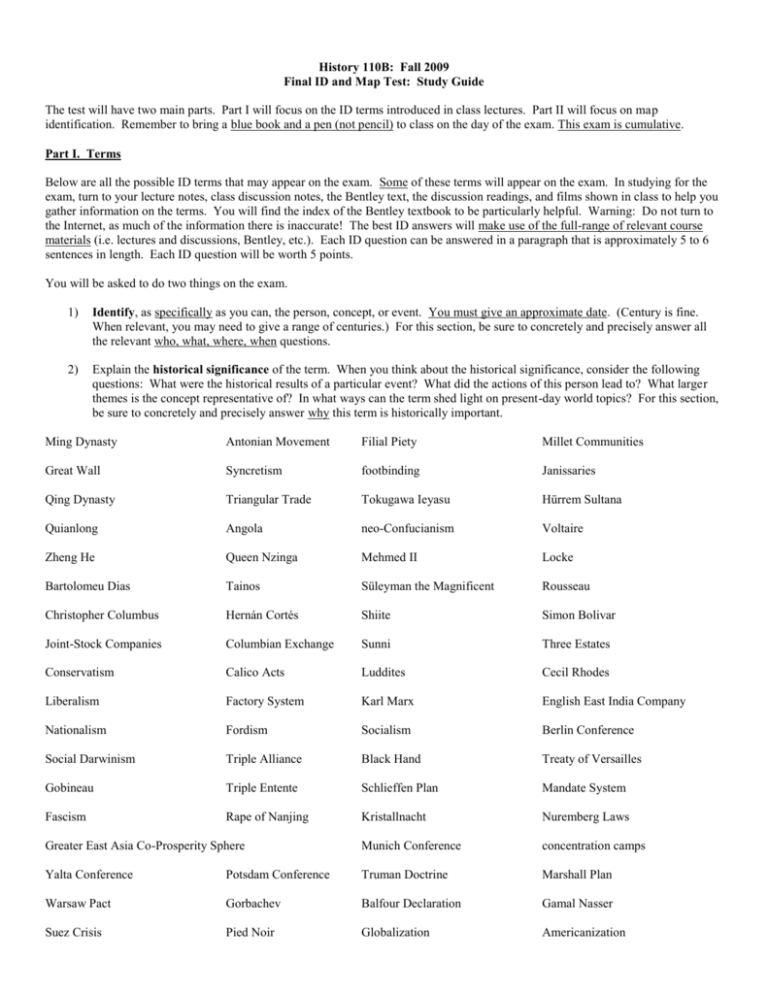
History 110B: Fall 2009 Final ID and Map Test: Study Guide The test will have two main parts. Part I will focus on the ID terms introduced in class lectures. Part II will focus on map identification. Remember to bring a blue book and a pen (not pencil) to class on the day of the exam. This exam is cumulative. Part I. Terms Below are all the possible ID terms that may appear on the exam. Some of these terms will appear on the exam. In studying for the exam, turn to your lecture notes, class discussion notes, the Bentley text, the discussion readings, and films shown in class to help you gather information on the terms. You will find the index of the Bentley textbook to be particularly helpful. Warning: Do not turn to the Internet, as much of the information there is inaccurate! The best ID answers will make use of the full-range of relevant course materials (i.e. lectures and discussions, Bentley, etc.). Each ID question can be answered in a paragraph that is approximately 5 to 6 sentences in length. Each ID question will be worth 5 points. You will be asked to do two things on the exam. 1) Identify, as specifically as you can, the person, concept, or event. You must give an approximate date. (Century is fine. When relevant, you may need to give a range of centuries.) For this section, be sure to concretely and precisely answer all the relevant who, what, where, when questions. 2) Explain the historical significance of the term. When you think about the historical significance, consider the following questions: What were the historical results of a particular event? What did the actions of this person lead to? What larger themes is the concept representative of? In what ways can the term shed light on present-day world topics? For this section, be sure to concretely and precisely answer why this term is historically important. Ming Dynasty Antonian Movement Filial Piety Millet Communities Great Wall Syncretism footbinding Janissaries Qing Dynasty Triangular Trade Tokugawa Ieyasu Hürrem Sultana Quianlong Angola neo-Confucianism Voltaire Zheng He Queen Nzinga Mehmed II Locke Bartolomeu Dias Tainos Süleyman the Magnificent Rousseau Christopher Columbus Hernán Cortés Shiite Simon Bolivar Joint-Stock Companies Columbian Exchange Sunni Three Estates Conservatism Calico Acts Luddites Cecil Rhodes Liberalism Factory System Karl Marx English East India Company Nationalism Fordism Socialism Berlin Conference Social Darwinism Triple Alliance Black Hand Treaty of Versailles Gobineau Triple Entente Schlieffen Plan Mandate System Fascism Rape of Nanjing Kristallnacht Nuremberg Laws Greater East Asia Co-Prosperity Sphere Munich Conference concentration camps Yalta Conference Potsdam Conference Truman Doctrine Marshall Plan Warsaw Pact Gorbachev Balfour Declaration Gamal Nasser Suez Crisis Pied Noir Globalization Americanization Part II. World Map Part II of the test will ask you to locate the present-day countries that correspond to the historical regions and societies studied in class. A blank map from which to study is on Dr. Granata's webpage. All of the numbered map features below will appear on the exam. Map items must be spelled correctly in order to receive full credit. Each map item will be worth 1 point. 1. Brazil 6. Portugal 11. Tunisia 16. Iraq 21. India 2. Bolivia 7. Spain 12. Libya 17. Iran 22. China 3. Peru 8. United Kingdom 13. Egypt 18. Saudi Arabia 23. Japan 4. Mexico 9. Algeria 14. Angola 19. Afghanistan 24. Philippines 5. Bahamas 10. Mali 15. Turkey 20. Pakistan 25. Mongolia 26. France 31. Russia 36. South Africa 27. Vietnam 32. Israel 37. Colombia 28. Thailand 33. Syria 38. Venezuela 29. Germany 34. Indonesia 39. Democratic Republic of Congo 30. Australia 35. Sudan 40. Canada
